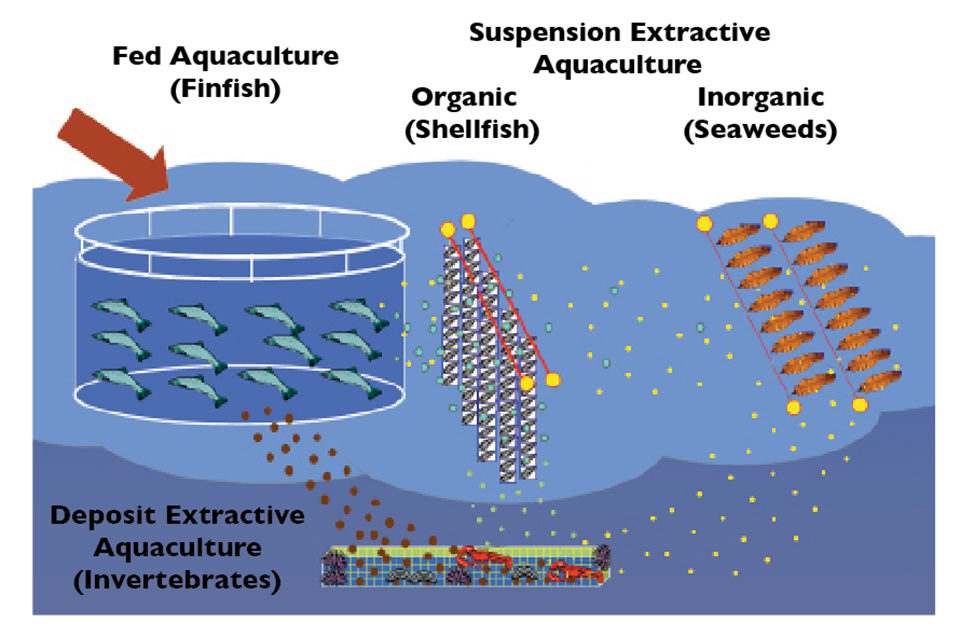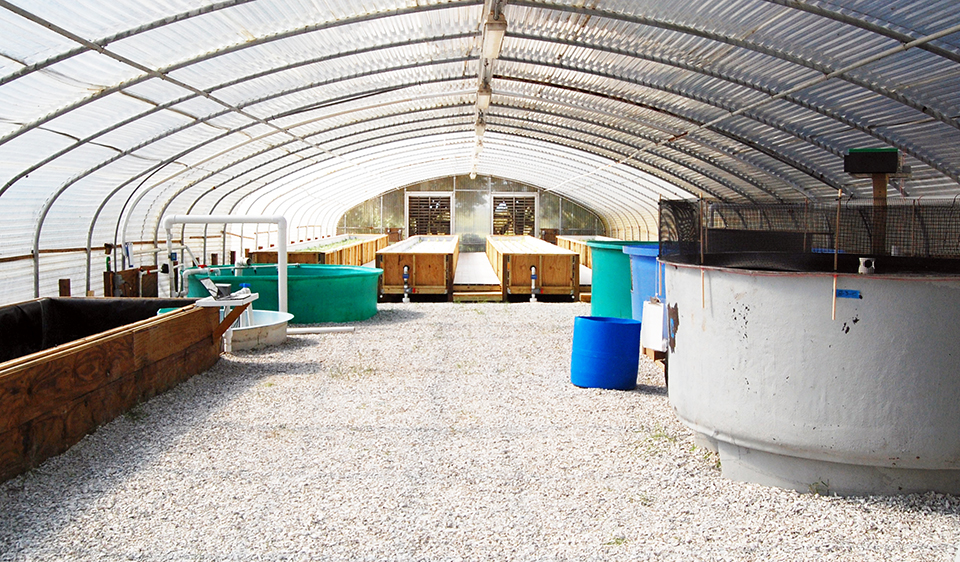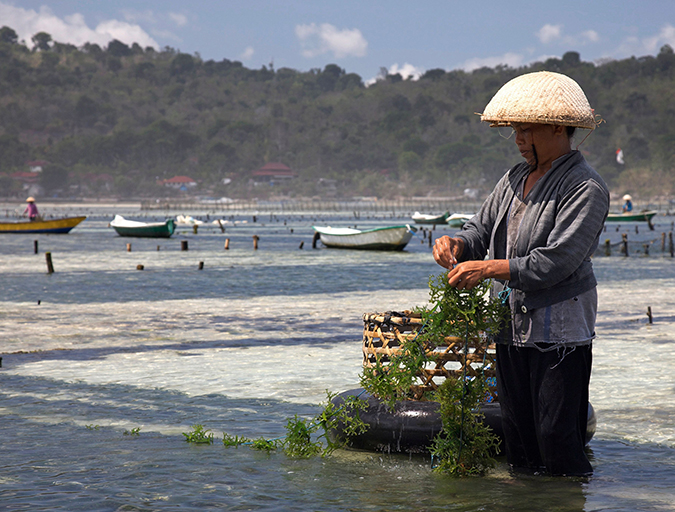Responsible practice provides diversified products, biomitigation

The global seafood industry is at a crossroads. As capture fisheries stagnate in volume, they are falling increasingly short of a growing world demand for seafood. It is anticipated that by 2030, there will be a 50-mmt to 80-mmt seafood deficit. This gap will likely not be filled by capture fisheries, but by aquaculture operations, which already supply almost 50 percent of the seafood consumed worldwide. Consequently, it is imperative to design the responsible aquaculture practices of tomorrow that maintain the integrity of ecosystems while ensuring the viability of this sector and its key roles in food provision, safety and security.
The majority of aquaculture production still originates from relatively sustainable extensive and semi-intensive systems. However, the rapid development throughout the world of intensive marine-fed aquaculture of carnivorous finfish and shrimp, and to a lesser extent some shellfish aquaculture, is associated with concerns about the environmental, economic and social impacts that these often monospecific practices can have, especially where activities are highly geographically concentrated or located in suboptimal sites whose assimilative capacities may be poorly understood and, consequently, prone to being exceeded.
Monoculture concerns
For many marine aquaculture operations, monoculture is, spatially and managerially, often the norm. Species are cultivated independently in different bays or regions. Consequently, the two different types of aquaculture – fed versus extractive – are often geographically separate, rarely balancing each other out at the local or regional scale, and, thus, any potential synergy between the two is lost. To avoid pronounced shifts in coastal processes, the solution to nutrification by fed aquaculture is not dilution, but extraction and conversion of the excess nutrients and energy into other commercial crops produced by extractive aquaculture.
To continue to grow, the aquaculture sector needs to develop more innovative, responsible, sustainable and profitable technologies and practices, which should be ecologically efficient, environmentally benign, product-diversified and societally beneficial. Maintaining sustainability, not only from an environmental, but also economic, social and technical perspectives, has become a key issue, increased by the enhanced awareness of demanding consumers regarding quality, traceability and production conditions.

IMTA: flexible, functional
Integrated multi-trophic aquaculture (IMTA) has the potential to play a role in reaching these objectives by cultivating fed species (e.g., finfish fed sustainable commercial diets) with extractive species, which utilize the inorganic (e.g., seaweeds) and organic (e.g., suspension and deposit feeders) excess nutrients from aquaculture for their growth.
The IMTA concept is extremely flexible. To use a musical analogy, IMTA is the central/overarching theme on which many variations can be developed according to the prevailing environmental, biological, physical, chemical, societal and economic conditions where the IMTA systems are operating. It can be applied to open-water or land-based systems, and marine or freshwater systems (sometimes called “aquaponics” or “partitioned aquaculture”). Integration should be understood as cultivation in proximity, not considering absolute distances but connectivity in terms of ecosystemic functionalities. The IMTA concept can be extended within very large ecosystems.
Diversification needed
The saying “Do not put all your eggs in one basket,” which applies to agriculture and many other businesses, should also apply to aquaculture. Having excess production of a single species leaves a business vulnerable to sustainability issues because of fluctuating prices in what become commodity markets and the possibility of catastrophic crop destruction due to diseases or damaging weather. Consequently, diversification of the aquaculture industry is advisable for reducing economic risk and maintaining sustainability and competitiveness.
From an ecological point of view, diversification also means cultivating more than one trophic level, i.e., not just raising several species of finfish in polyculture, but adding into the mix organisms of different and lower trophic levels, such as seaweeds, shellfish, crustaceans, echinoderms, worms and bacteria chosen according to their complementary roles in the ecosystem and their established or potential commercial value. This approach mimics natural ecosystems.
Ecosystem approach
Evolving aquaculture practices will require a conceptual shift toward understanding the working of food production systems rather than focusing on technological solutions. One of the innovative solutions promoted for environmental sustainability, economic stability and societal acceptability is IMTA.
The aim is to increase long-term sustainability and profitability per cultivation unit, not per species in isolation, as is done in monoculture. The wastes of a fed animal crop are not lost but recaptured and converted into fertilizer, food and energy for the other crops (extractive plants and animals). These, in turn, can be harvested and marketed as healthy seafood, while biomitigation takes place through partial removal of nutrients and carbon dioxide, and production of oxygen.
In this way, all the cultivation components have commercial value, as well as key roles in recycling processes and biomitigating services. Some of the externalities of fed monoculture are internalized, hence increasing the overall sustainability, long-term profitability and resilience of aquaculture farms.
Biomitigation value
A few economic analyses have indicated that the outlook for increased profitability through IMTA is promising. However, these analyses were based solely on the commercial values of harvested biomass and used conservative price estimates for the co-cultivated organisms based on known applications. One aspect not factored into these analyses was the fact that the extractive component of an IMTA system not only produces a valuable multi-purpose biomass, but also simultaneously renders waste reduction services to society.
It is particularly important to recognize that once nutrients have entered coastal ecosystems, not many removal options are available. The use of extractive species is one of the few realistic and cost-effective options. The economic values of the environmental services of extractive species should, therefore, be counted in the evaluation of IMTA components.
Nutrient trading credits
To improve the sustainability of anthropogenic nutrient-loading practices such as aquaculture, incentives such as nutrient trading credits (NTCs) should be established as a means to promote nutrient load reduction or nutrient recovery. During the last few years, there has been much talk about carbon credits. However, within coastal settings, the concerns have largely been with nitrogen, due to the fact that its typical role as a limiting nutrient is no longer the case in some regions.
The potential effects of carbon loading in the marine environment should also be considered. Localized benthic anoxia and, consequently, hydrogen sulfide release can occur when solid waste deposition rates exceed aerobic decomposition rates. Ocean acidification due to increased dissolved carbon dioxide levels has also prompted serious new concerns.
With an appropriate composition of co-cultured species, IMTA has the potential to reduce the amounts of dissolved inorganic and solid organic forms of nitrogen, carbon and phosphorus, making extractive aquaculture a good candidate for NTCs or another suitable approach to deal with the pressing issues of coastal nutrient loading.
Interestingly, the removal of nitrogen could be about 100 times more lucrative than that of carbon. The cost of removing nitrogen is not clearly defined, but studies may help define a range of possible prices for economic evaluation of the NTC concept. The cost of removing 1 kg of nitrogen varies between U.S. $3 and $38 at sewage treatment facilities, depending on the technology used and the labor costs in different countries. The municipality of Lysekil in Sweden is paying approximately $10/kg removed by the filter-feeding mussel, Mytilus edulis, to the farm Nordic Shell Produktion A.B.
(Editor’s Note: This article was originally published in the September/October 2010 print edition of the Global Aquaculture Advocate.)
Now that you've reached the end of the article ...
… please consider supporting GSA’s mission to advance responsible seafood practices through education, advocacy and third-party assurances. The Advocate aims to document the evolution of responsible seafood practices and share the expansive knowledge of our vast network of contributors.
By becoming a Global Seafood Alliance member, you’re ensuring that all of the pre-competitive work we do through member benefits, resources and events can continue. Individual membership costs just $50 a year.
Not a GSA member? Join us.
Authors
-
Dr. Thierry Chopin
University of New Brunswick
Canadian IMTA Network
P. O. Box 5050
Saint John, New Brunswick E2L 4L5 Canada -
Dr. Max Troell
The Royal Swedish Academy of Sciences
Beijer International Institute of Ecological Economics
Stockholm, Sweden -
Dr. Gregor K. Reid
University of New Brunswick
Canadian IMTA Network
P. O. Box 5050
Saint John, New Brunswick E2L 4L5 Canada -
Dr. Duncan Knowler
Simon Fraser University
School of Resource and Environmental Management
Burnaby, British Columbia, Canada -
Dr. Shawn M.C. Robinson
Department of Fisheries and Oceans
Biological Station
St. Andrews, New Brunswick, Canada -
Dr. Amir Neori
Israel Oceanographic and Limnological Research Ltd.
National Centre for Mariculture
Eilat, Israel -
Dr. Alejandro H. Buschmann
i-mar
Universidad de Los Lagos
Puerto Montt, Chile -
Dr. Shaojun Pang
Institute of Oceanology
Chinese Academy of Sciences
Qingdao, China
Tagged With
Related Posts

Responsibility
A look at integrated multi-trophic aquaculture
In integrated multi-trophic aquaculture, farmers combine the cultivation of fed species such as finfish or shrimp with extractive seaweeds, aquatic plants and shellfish and other invertebrates that recapture organic and inorganic particulate nutrients for their growth.

Responsibility
Aquaponic system produces red drum, saltwater vegetable species
A project in Florida is studying the feasibility of a marine aquaponic system containing red drum and two native saltwater species. Water that exits the plant raceways is filtered and recirculated to the fish tanks. In tests, sea purslane grew rapidly, while saltwort took almost four months to adapt. The fish exhibited high survival and achieved a feed-conversion ratio of 1.2.

Responsibility
Can sustainable mariculture match agriculture’s output?
Global, sustainable mariculture production, developed on a massive, sustainable scale and using just a small fraction of the world’s oceanic areas, could eventually match the output of land-based agriculture production. Scale and international law considerations require the involvement of many stakeholders, including national governments and international organizations.

Health & Welfare
A holistic management approach to EMS
Early Mortality Syndrome has devastated farmed shrimp in Asia and Latin America. With better understanding of the pathogen and the development and improvement of novel strategies, shrimp farmers are now able to better manage the disease.


